
INJ
Injective-pris
$11,6400
+$0,29100
(+2,56 %)
Prisendring fra 00:00 UTC til nå

Ansvarsfraskrivelse
Det sosiale innholdet på denne siden («Innhold»), inkludert, men ikke begrenset til, tweets og statistikk levert av LunarCrush, er hentet fra tredjeparter og levert «som det er» kun for informasjonsformål. OKX garanterer ikke kvaliteten eller nøyaktigheten til innholdet, og innholdet representerer ikke synspunktene til OKX. Det er ikke ment å gi (i) investeringsråd eller anbefalinger, (ii) et tilbud eller oppfordring til å kjøpe, selge eller holde digitale ressurser, eller (iii) finansiell, regnskapsmessig, juridisk eller skattemessig rådgivning. Digitale ressurser, inkludert stablecoins og NFT-er, innebærer en høy grad av risiko, og kan variere mye. Prisen og ytelsen til den digitale ressursen er ikke garantert og kan endres uten varsel.
OKX gir ikke anbefalinger om investering eller aktiva. Du bør vurdere nøye om trading eller holding av digitale aktiva er egnet for deg i lys av din økonomiske situasjon. Rådfør deg med din juridiske / skatte- / investeringsprofesjonelle for spørsmål om dine spesifikke omstendigheter. For ytterligere detaljer, se våre vilkår for bruk og risikoadvarsel. Ved å bruke tredjepartsnettstedet («TPN») godtar du at all bruk av TPN vil være underlagt og styrt av vilkårene på TPN. Med mindre det er uttrykkelig angitt skriftlig, er OKX og dets partnere («OKX») ikke på noen måte knyttet til eieren eller operatøren av TPN. Du godtar at OKX ikke er ansvarlige for tap, skade eller andre konsekvenser som oppstår fra din bruk av TPN. Vær oppmerksom på at bruk av TNS kan føre til tap eller reduksjon av eiendelene dine. Produktet er kanskje ikke tilgjengelig i alle jurisdiksjoner.
OKX gir ikke anbefalinger om investering eller aktiva. Du bør vurdere nøye om trading eller holding av digitale aktiva er egnet for deg i lys av din økonomiske situasjon. Rådfør deg med din juridiske / skatte- / investeringsprofesjonelle for spørsmål om dine spesifikke omstendigheter. For ytterligere detaljer, se våre vilkår for bruk og risikoadvarsel. Ved å bruke tredjepartsnettstedet («TPN») godtar du at all bruk av TPN vil være underlagt og styrt av vilkårene på TPN. Med mindre det er uttrykkelig angitt skriftlig, er OKX og dets partnere («OKX») ikke på noen måte knyttet til eieren eller operatøren av TPN. Du godtar at OKX ikke er ansvarlige for tap, skade eller andre konsekvenser som oppstår fra din bruk av TPN. Vær oppmerksom på at bruk av TNS kan føre til tap eller reduksjon av eiendelene dine. Produktet er kanskje ikke tilgjengelig i alle jurisdiksjoner.
Injective markedsinformasjon
Markedsverdi
Markedsverdien beregnes ved å multiplisere det sirkulerende tilbudet av en mynt med den siste prisen.
Markedsverdi = Sirkulerende tilbud × Siste pris
Markedsverdi = Sirkulerende tilbud × Siste pris
Sirkulerende forsyning
Totalbeløpet for en mynt som er offentlig tilgjengelig på markedet.
Markedsverdirangering
En mynts rangering i form av markedsverdi.
Historisk toppnivå
Høyeste pris en mynt har nådd i sin handelshistorikk.
Historisk bunnivå
Laveste pris en mynt har nådd i sin handelshistorikk.
Markedsverdi
$1,14 mrd.
Sirkulerende forsyning
97 727 220 INJ
97,72 % av
100 000 000 INJ
Markedsverdirangering
--
Revisjoner

Siste revisjon: 1. sep. 2020, (UTC+8)
Høyeste pris siste 24 timer
$12,0830
Laveste pris siste 24 timer
$11,2790
Historisk toppnivå
$53,2000
−78,13 % (-$41,5600)
Sist oppdatert: 14. mars 2024, (UTC+8)
Historisk bunnivå
$6,3420
+83,53 % (+$5,2980)
Sist oppdatert: 7. apr. 2025, (UTC+8)
Hva føler du om INJ i dag?
Del følelsene dine her ved å gi en tommel opp hvis du føler deg optimistisk om mynten eller en tommel ned hvis du føler deg nedadgående.
Stem for å vise resultater
Injective-feed
Følgende innhold er hentet fra .

Injective 🥷
1/ I dag introduserer vi den første bølgen av banebrytende dApps som nå er live på Injective EVM Public Testnet 💥
Fra neste generasjons DEX-er og AI-drevne avkastningsprotokoller til tokeniserte RWA-er, er disse appene fullstendig på kjeden, bygget på den raskeste L1 med de laveste avgiftene og innebygd komponerbarhet.
Vis originalen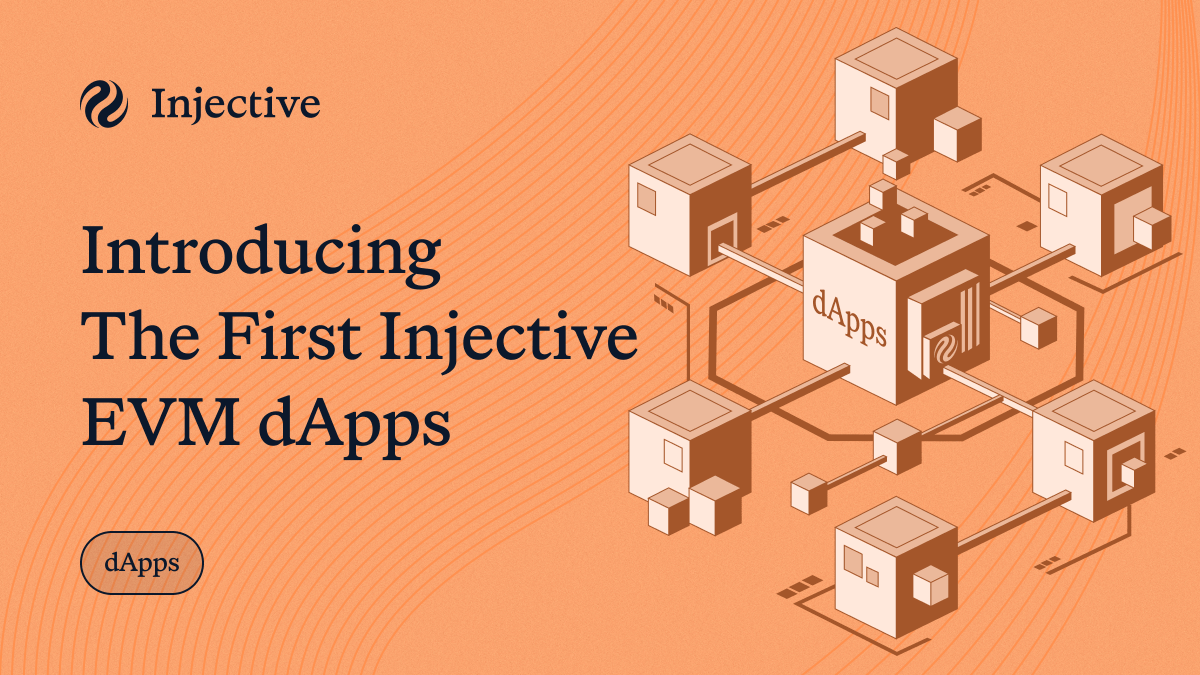
6,89k
191

HGTP://BitcoinBa🅡🅡y
$DAG ER KRYPTOS STØRSTE SOVENDE GIGANT 🙂
#DelegateDAG til Bitcoin.Barry-noden 🥩
$DAG ER KONGE 🎯👀👑

CryptoReviewing
#Altcoins satt til å dominere i løpet av de kommende månedene:
$KAS @ 0.078
$TAO @ 340
$RIO @ 0.30
$ORAI @ 2.70
$INJ @ 12
$RENDER @ 3.35
$QNT @ 110
$ONDO @ 0.80
$FET @ 0.72
$NAKA @ 0.34
$HBAR @ 0.16
$ICP @ 5
$SUI @ 3
$JASMY @ 0.013
$DAG @ 0.032
Hva #Altcoins vil du legge til? Kommenter nedenfor👇
5,91k
10

CryptoBusy
🚨 ICYMI: To massive milepæler landet nettopp for @injective denne uken!
$XRP gikk live på Injective, og ble den første store kjeden som integrerte XRPLs EVM-hovednett.
En sømløs bro til en av de største eiendelene innen krypto.
Og Injective EVM Testnet ble også lansert, og låste opp apper og utviklere på toppnivå på det raskeste Layer 1 innen krypto.
En ny æra av onchain-finansiering har allerede startet.
Alt drevet av $INJ.
Merk: Ja, jeg har holdt noen $XRP siden 2018 😉
Vis originalen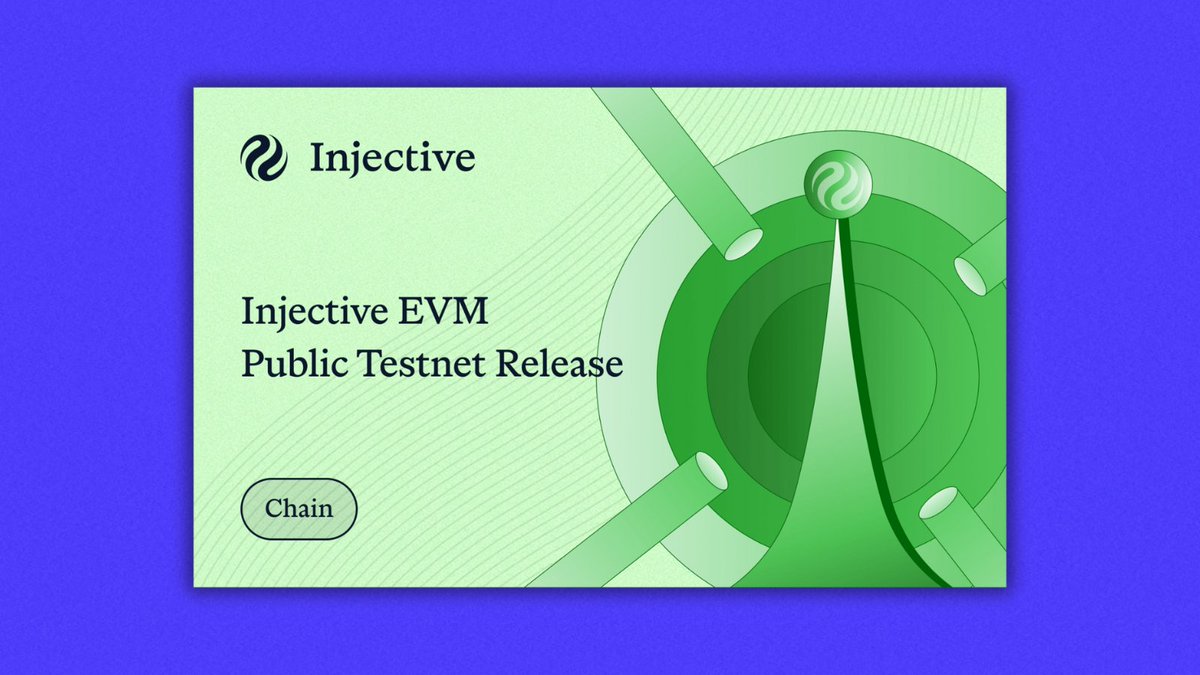
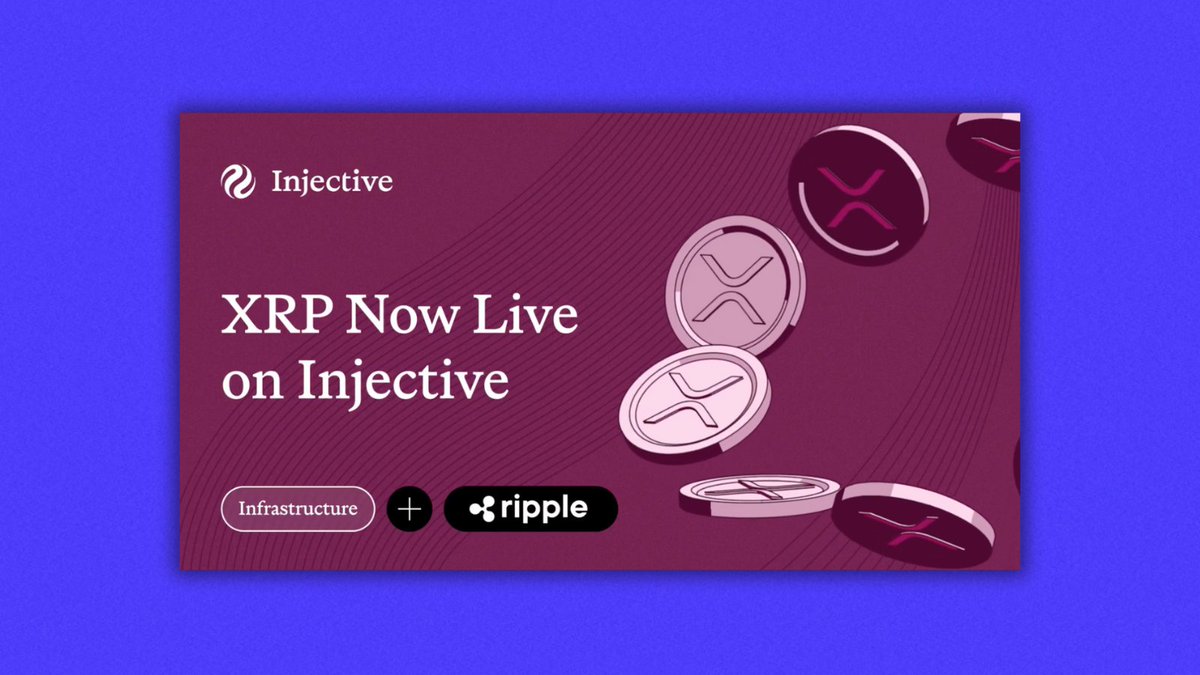

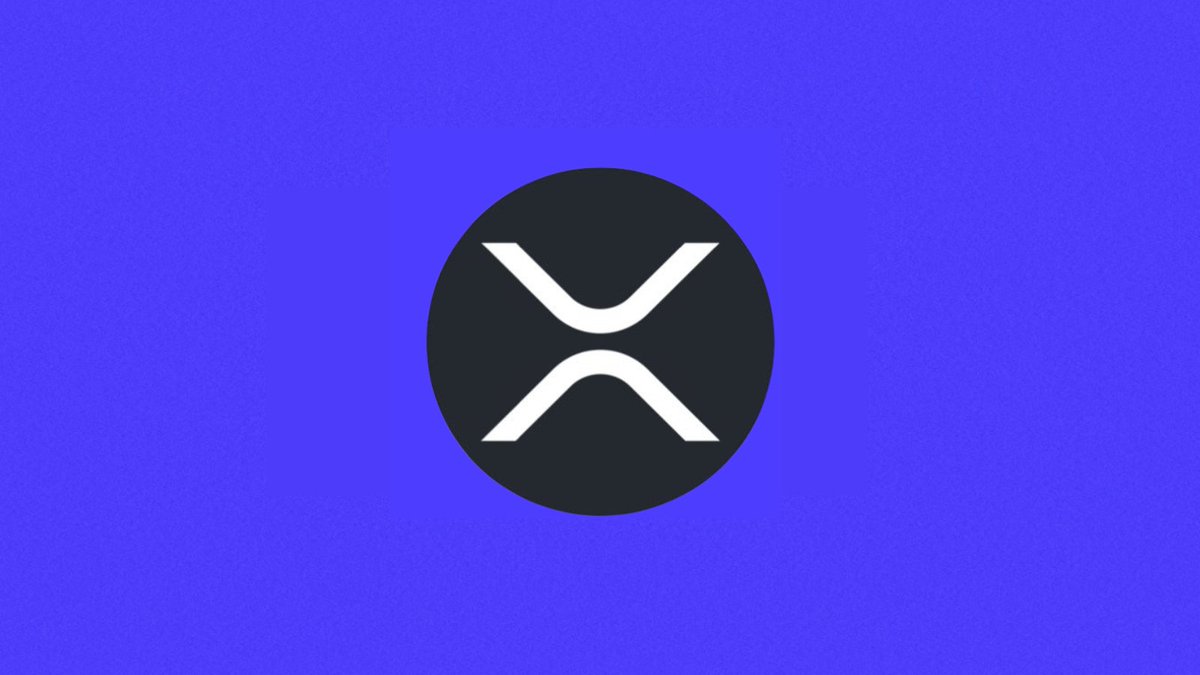
11,4k
142
Konverter USD til INJ


Injective prisutvikling i USD
Gjeldende pris på Injective er $11,6400. Siden 00:00 UTC, Injective har økt ved +2,56 %. Den har for tiden en sirkulerende forsyning på 97 727 220 INJ og en maksimal forsyning på 100 000 000 INJ, noe som gir den en fullt utvannet markedsverdi på $1,14 mrd.. For tiden har Injective-mynten 0. plass i markedsverdirangeringen. Injective/USD-prisen oppdateres i sanntid.
I dag
+$0,29100
+2,56 %
7 dager
+$0,64500
+5,86 %
30 dager
-$1,0890
−8,56 %
3 måneder
+$3,3370
+40,19 %
Populære Injective konverteringer
Sist oppdatert: 04.07.2025, 06:18
| 1 INJ til USD | 11,6600 $ |
| 1 INJ til EUR | 9,9171 € |
| 1 INJ til PHP | 657,24 ₱ |
| 1 INJ til IDR | 189 255,0 Rp |
| 1 INJ til GBP | 8,5387 £ |
| 1 INJ til CAD | 15,8377 $ |
| 1 INJ til AED | 42,8272 AED |
| 1 INJ til VND | 305 475,5 ₫ |
Om Injective (INJ)
Den oppgitte vurderingen er en samlet vurdering som OKX har samlet inn fra de oppgitte kildene, og er kun ment som informasjon. OKX garanterer ikke for kvaliteten eller nøyaktigheten av vurderingene. Denne aktiviteten er ikke ment å gi (i) investeringsråd eller en anbefaling, (ii) et tilbud eller oppfordring om å kjøpe, selge eller holde digitale ressurser, eller (iii) finansiell, regnskapsmessig, juridisk eller skattemessig rådgivning. Digitale ressurser, inkludert stablecoins og NFT-er, innebærer en høy grad av risiko, og verdien kan variere mye, og til og med verdiløs. Prisen og ytelsen til digitale ressurser er ikke garantert og kan endres uten varsel. De digital ressursene dine er ikke dekket av forsikring mot potensielle tap. Historisk avkastning er ikke en indikasjon på fremtidig avkastning. OKX garanterer ikke avkastning, tilbakebetaling av hovedstol eller renter. OKX gir ikke anbefalinger om investeringer eller aktiva. Du bør nøye overveie om trading eller holding digitale ressurser passer for deg i lys av din økonomiske situasjon. Rådfør deg med din advokat/skatte- eller investeringsekspert hvis du har spørsmål om dine spesifikke forhold.
Vis mer
- Offisiell nettside
- Github
- Blokkutforsker
Om tredjepartsnettsteder
Om tredjepartsnettsteder
Ved å bruke tredjepartsnettstedet ("TPW") godtar du at all bruk av TPW vil være underlagt og styrt av vilkårene i TPW. Med mindre det er uttrykkelig angitt skriftlig, er OKX og dets tilknyttede selskaper ("OKX") ikke på noen måte knyttet til eieren eller operatøren av TPW. Du godtar at OKX ikke er ansvarlig eller ansvarlig for tap, skade eller andre konsekvenser som oppstår fra din bruk av TPW. Vær oppmerksom på at bruk av en TPW kan føre til tap eller reduksjon av dine aktiva.
Injective Vanlige spørsmål
Hvor mye er 1 Injective verdt i dag?
For øyeblikket er en Injective verdt $11,6400. For svar og innsikt i prishandlingen til Injective, er du på rett sted. Utforsk de nyeste Injective diagrammene og trade ansvarlig med OKX.
Hva er kryptovaluta?
Kryptovalutaer, for eksempel Injective, er digitale eiendeler som opererer på en offentlig hovedbok kalt blokk-kjeder. Lær mer om mynter og tokens som tilbys på OKX og deres forskjellige attributter, som inkluderer live-priser og sanntidsdiagrammer.
Når ble kryptovaluta oppfunnet?
Takket være finanskrisen i 2008 økte interessen for desentralisert finans. Bitcoin tilbød en ny løsning ved å være en sikker digital ressurs på et desentralisert nettverk. Siden den gang har mange andre tokens som Injective blitt opprettet også.
Vil prisen på Injective gå opp i dag?
Ta en titt på vår Injective prisantydningsside for å forutsi fremtidige priser og bestemme prismålene dine.
ESG-erklæring
ESG-forskrifter (Environmental, Social, and Governance) for kryptoaktiva tar sikte på å adressere deres miljøpåvirkning (f.eks. energikrevende gruvedrift), fremme åpenhet og sikre etisk styringspraksis for å tilpasse kryptoindustrien med bredere bærekraft- og samfunnsmål. Disse forskriftene oppfordrer til overholdelse av standarder som reduserer risiko og fremmer tillit til digitale eiendeler.
Aktivadetaljer
Navn
OKCoin Europe Ltd
Relevant juridisk enhetsidentifikator
54930069NLWEIGLHXU42
Navn på kryptoaktiva
Injective Token
Konsensusmekanisme
Injective Token is present on the following networks: Binance Smart Chain, Cosmos, Ethereum, Injective, Osmosis.
Binance Smart Chain (BSC) uses a hybrid consensus mechanism called Proof of Staked Authority (PoSA), which combines elements of Delegated Proof of Stake (DPoS) and Proof of Authority (PoA). This method ensures fast block times and low fees while maintaining a level of decentralization and security. Core Components 1. Validators (so-called “Cabinet Members”): Validators on BSC are responsible for producing new blocks, validating transactions, and maintaining the network’s security. To become a validator, an entity must stake a significant amount of BNB (Binance Coin). Validators are selected through staking and voting by token holders. There are 21 active validators at any given time, rotating to ensure decentralization and security. 2. Delegators: Token holders who do not wish to run validator nodes can delegate their BNB tokens to validators. This delegation helps validators increase their stake and improves their chances of being selected to produce blocks. Delegators earn a share of the rewards that validators receive, incentivizing broad participation in network security. 3. Candidates: Candidates are nodes that have staked the required amount of BNB and are in the pool waiting to become validators. They are essentially potential validators who are not currently active but can be elected to the validator set through community voting. Candidates play a crucial role in ensuring there is always a sufficient pool of nodes ready to take on validation tasks, thus maintaining network resilience and decentralization. Consensus Process 4. Validator Selection: Validators are chosen based on the amount of BNB staked and votes received from delegators. The more BNB staked and votes received, the higher the chance of being selected to validate transactions and produce new blocks. The selection process involves both the current validators and the pool of candidates, ensuring a dynamic and secure rotation of nodes. 5. Block Production: The selected validators take turns producing blocks in a PoA-like manner, ensuring that blocks are generated quickly and efficiently. Validators validate transactions, add them to new blocks, and broadcast these blocks to the network. 6. Transaction Finality: BSC achieves fast block times of around 3 seconds and quick transaction finality. This is achieved through the efficient PoSA mechanism that allows validators to rapidly reach consensus. Security and Economic Incentives 7. Staking: Validators are required to stake a substantial amount of BNB, which acts as collateral to ensure their honest behavior. This staked amount can be slashed if validators act maliciously. Staking incentivizes validators to act in the network's best interest to avoid losing their staked BNB. 8. Delegation and Rewards: Delegators earn rewards proportional to their stake in validators. This incentivizes them to choose reliable validators and participate in the network’s security. Validators and delegators share transaction fees as rewards, which provides continuous economic incentives to maintain network security and performance. 9. Transaction Fees: BSC employs low transaction fees, paid in BNB, making it cost-effective for users. These fees are collected by validators as part of their rewards, further incentivizing them to validate transactions accurately and efficiently.
The Cosmos network uses the Cosmos SDK, a modular framework that enables developers to build custom, application-specific blockchains. Cosmos SDK chains rely on Tendermint Core, a Byzantine Fault Tolerant (BFT) Proof of Stake (PoS) consensus engine that supports interoperability and fast transaction finality. Core Components: 1. Tendermint BFT Consensus with Proof of Stake: Validator Selection: Cosmos validators are selected based on the amount of ATOM they stake or receive from delegators. These validators participate in block proposal and validation through a two-thirds majority voting system. Security Threshold: Tendermint BFT ensures network security as long as fewer than one-third of validators act maliciously. 2. Modular Cosmos SDK Framework: Inter-Blockchain Communication (IBC): The Cosmos SDK supports IBC, allowing seamless interoperability between Cosmos-based blockchains. Application Blockchain Interface (ABCI): This interface separates the consensus layer from the application layer, enabling developers to implement custom logic without modifying the consensus engine.
The crypto-asset's Proof-of-Stake (PoS) consensus mechanism, introduced with The Merge in 2022, replaces mining with validator staking. Validators must stake at least 32 ETH every block a validator is randomly chosen to propose the next block. Once proposed the other validators verify the blocks integrity. The network operates on a slot and epoch system, where a new block is proposed every 12 seconds, and finalization occurs after two epochs (~12.8 minutes) using Casper-FFG. The Beacon Chain coordinates validators, while the fork-choice rule (LMD-GHOST) ensures the chain follows the heaviest accumulated validator votes. Validators earn rewards for proposing and verifying blocks, but face slashing for malicious behavior or inactivity. PoS aims to improve energy efficiency, security, and scalability, with future upgrades like Proto-Danksharding enhancing transaction efficiency.
Injective operates on a Tendermint-based Proof of Stake (PoS) consensus model, ensuring high throughput and immediate transaction finality. Core Components: Tendermint-based Proof of Stake (PoS): Ensures instant transaction finality and supports efficient block production for high-speed transactions. Validator Selection: Validators are chosen based on the amount of INJ tokens staked, considering both self-staked and delegated tokens, to maintain a decentralized network. Delegation: INJ holders can delegate their tokens to validators, earning a share of staking rewards while participating in network governance. Instant Finality: The Tendermint consensus mechanism provides immediate finality, ensuring transactions cannot be reversed once validated.
Osmosis operates on a Proof of Stake (PoS) consensus mechanism, leveraging the Cosmos SDK and Tendermint Core to provide secure, decentralized, and scalable transaction processing. Core Components: Proof of Stake (PoS): Validators are chosen based on the amount of OSMO tokens they stake or are delegated by other token holders. Validators are responsible for validating transactions, producing blocks, and maintaining network security. Cosmos SDK and Tendermint Core: Osmosis uses Tendermint Core for Byzantine Fault Tolerant (BFT) consensus, ensuring fast finality and resistance to attacks as long as less than one-third of validators are malicious. Decentralized Governance: OSMO token holders can participate in governance by voting on protocol upgrades and network parameters, fostering a community-driven approach to network development.
Insentivmekanismer og gjeldende gebyrer
Injective Token is present on the following networks: Binance Smart Chain, Cosmos, Ethereum, Injective, Osmosis.
Binance Smart Chain (BSC) uses the Proof of Staked Authority (PoSA) consensus mechanism to ensure network security and incentivize participation from validators and delegators. Incentive Mechanisms 1. Validators: Staking Rewards: Validators must stake a significant amount of BNB to participate in the consensus process. They earn rewards in the form of transaction fees and block rewards. Selection Process: Validators are selected based on the amount of BNB staked and the votes received from delegators. The more BNB staked and votes received, the higher the chances of being selected to validate transactions and produce new blocks. 2. Delegators: Delegated Staking: Token holders can delegate their BNB to validators. This delegation increases the validator's total stake and improves their chances of being selected to produce blocks. Shared Rewards: Delegators earn a portion of the rewards that validators receive. This incentivizes token holders to participate in the network’s security and decentralization by choosing reliable validators. 3. Candidates: Pool of Potential Validators: Candidates are nodes that have staked the required amount of BNB and are waiting to become active validators. They ensure that there is always a sufficient pool of nodes ready to take on validation tasks, maintaining network resilience. 4. Economic Security: Slashing: Validators can be penalized for malicious behavior or failure to perform their duties. Penalties include slashing a portion of their staked tokens, ensuring that validators act in the best interest of the network. Opportunity Cost: Staking requires validators and delegators to lock up their BNB tokens, providing an economic incentive to act honestly to avoid losing their staked assets. Fees on the Binance Smart Chain 5. Transaction Fees: Low Fees: BSC is known for its low transaction fees compared to other blockchain networks. These fees are paid in BNB and are essential for maintaining network operations and compensating validators. Dynamic Fee Structure: Transaction fees can vary based on network congestion and the complexity of the transactions. However, BSC ensures that fees remain significantly lower than those on the Ethereum mainnet. 6. Block Rewards: Incentivizing Validators: Validators earn block rewards in addition to transaction fees. These rewards are distributed to validators for their role in maintaining the network and processing transactions. 7. Cross-Chain Fees: Interoperability Costs: BSC supports cross-chain compatibility, allowing assets to be transferred between Binance Chain and Binance Smart Chain. These cross-chain operations incur minimal fees, facilitating seamless asset transfers and improving user experience. 8. Smart Contract Fees: Deployment and Execution Costs: Deploying and interacting with smart contracts on BSC involves paying fees based on the computational resources required. These fees are also paid in BNB and are designed to be cost-effective, encouraging developers to build on the BSC platform.
The Cosmos network incentivizes both validators and delegators to secure the network through staking rewards, funded by transaction fees and newly minted ATOM. Incentive Mechanisms: 1. Staking Rewards for Validators and Delegators: ATOM Rewards: Validators earn staking rewards in ATOM tokens for participating in consensus, with rewards shared with delegators who stake ATOM through delegation. 2. Slashing for Accountability: Penalties for Misconduct: Validators who act maliciously, such as double-signing or staying offline, face slashing penalties, which remove a portion of their staked ATOM. Delegators may also experience slashing if their chosen validator is penalized, encouraging careful selection of trustworthy validators. Applicable Fees: 1. Transaction Fees: User-Paid Fees in ATOM: All transactions on the Cosmos Hub incur fees paid in ATOM, compensating validators for transaction processing and helping to prevent network spam. 2. Customizable Fee Model: Custom Token Fees: Cosmos SDK allows individual chains to define their own transaction fees in tokens other than ATOM, supporting varied application requirements within the ecosystem.
The crypto-asset's PoS system secures transactions through validator incentives and economic penalties. Validators stake at least 32 ETH and earn rewards for proposing blocks, attesting to valid ones, and participating in sync committees. Rewards are paid in newly issued ETH and transaction fees. Under EIP-1559, transaction fees consist of a base fee, which is burned to reduce supply, and an optional priority fee (tip) paid to validators. Validators face slashing if they act maliciously and incur penalties for inactivity. This system aims to increase security by aligning incentives while making the crypto-asset's fee structure more predictable and deflationary during high network activity.
Injective incentivizes network participation through staking rewards and a unique transaction fee model that supports long-term value for INJ tokens. Incentive Mechanisms: Staking Rewards: INJ holders earn rewards for staking their tokens, encouraging active participation in securing the network. Validator Rewards: Validators receive staking rewards and transaction fees for processing transactions and maintaining network security. Applicable Fees: Transaction Fees: Users pay fees in INJ tokens for network transactions, including smart contract execution and trading. Fee Structure: A portion of transaction fees is burned via a weekly on-chain auction, reducing the overall supply of INJ tokens and supporting a deflationary tokenomics model.
Osmosis incentivizes validators, delegators, and liquidity providers through a combination of staking rewards, transaction fees, and liquidity incentives. Incentive Mechanisms: Validator Rewards: Validators earn rewards from transaction fees and block rewards, distributed in OSMO tokens, for their role in securing the network and processing transactions. Delegators who stake their OSMO tokens with validators receive a share of these rewards. Liquidity Provider Rewards: Users providing liquidity to Osmosis pools earn swap fees and may receive additional incentives in the form of OSMO tokens to encourage liquidity provision. Superfluid Staking: Liquidity providers can participate in superfluid staking, staking a portion of their OSMO tokens within liquidity pools. This mechanism allows users to earn staking rewards while maintaining liquidity in the pools. Applicable Fees: Transaction Fees: Users pay transaction fees in OSMO tokens for network activities, including swaps, staking, and governance participation. These fees are distributed to validators and delegators, incentivizing their continued participation and support for network security.
Starten på perioden som erklæringen gjelder for
2024-07-02
Slutten på perioden som erklæringen gjelder for
2025-07-02
Energirapport
Energiforbruk
237116.21379 (kWh/a)
Energiforbrukskilder og metodologier
The energy consumption of this asset is aggregated across multiple components:
For the calculation of energy consumptions, the so called 'bottom-up' approach is being used. The nodes are considered to be the central factor for the energy consumption of the network. These assumptions are made on the basis of empirical findings through the use of public information sites, open-source crawlers and crawlers developed in-house. The main determinants for estimating the hardware used within the network are the requirements for operating the client software. The energy consumption of the hardware devices was measured in certified test laboratories. Due to the structure of this network, it is not only the mainnet that is responsible for energy consumption. In order to calculate the structure adequately, a proportion of the energy consumption of the connected network, cosmos, must also be taken into account, because the connected network is also responsible for security. This proportion is determined on the basis of gas consumption. When calculating the energy consumption, we used - if available - the Functionally Fungible Group Digital Token Identifier (FFG DTI) to determine all implementations of the asset of question in scope and we update the mappings regulary, based on data of the Digital Token Identifier Foundation. The information regarding the hardware used and the number of participants in the network is based on assumptions that are verified with best effort using empirical data. In general, participants are assumed to be largely economically rational. As a precautionary principle, we make assumptions on the conservative side when in doubt, i.e. making higher estimates for the adverse impacts.
To determine the energy consumption of a token, the energy consumption of the network(s) binance_smart_chain, cosmos, ethereum, osmosis is calculated first. For the energy consumption of the token, a fraction of the energy consumption of the network is attributed to the token, which is determined based on the activity of the crypto-asset within the network. When calculating the energy consumption, the Functionally Fungible Group Digital Token Identifier (FFG DTI) is used - if available - to determine all implementations of the asset in scope. The mappings are updated regularly, based on data of the Digital Token Identifier Foundation. The information regarding the hardware used and the number of participants in the network is based on assumptions that are verified with best effort using empirical data. In general, participants are assumed to be largely economically rational. As a precautionary principle, we make assumptions on the conservative side when in doubt, i.e. making higher estimates for the adverse impacts.
Konverter USD til INJ




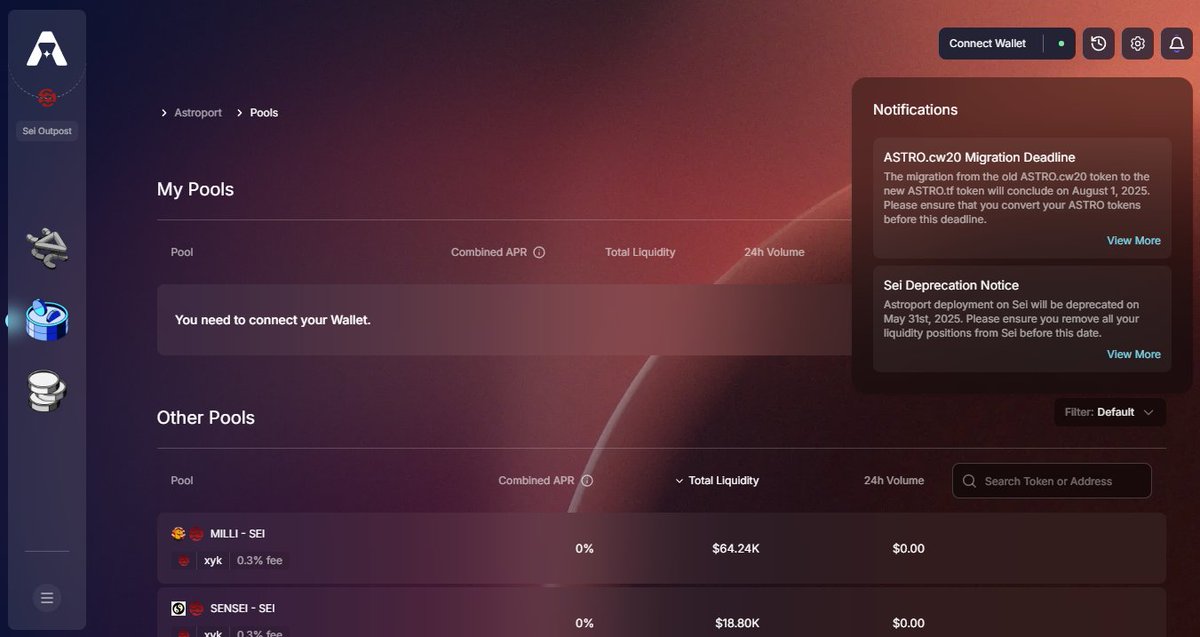

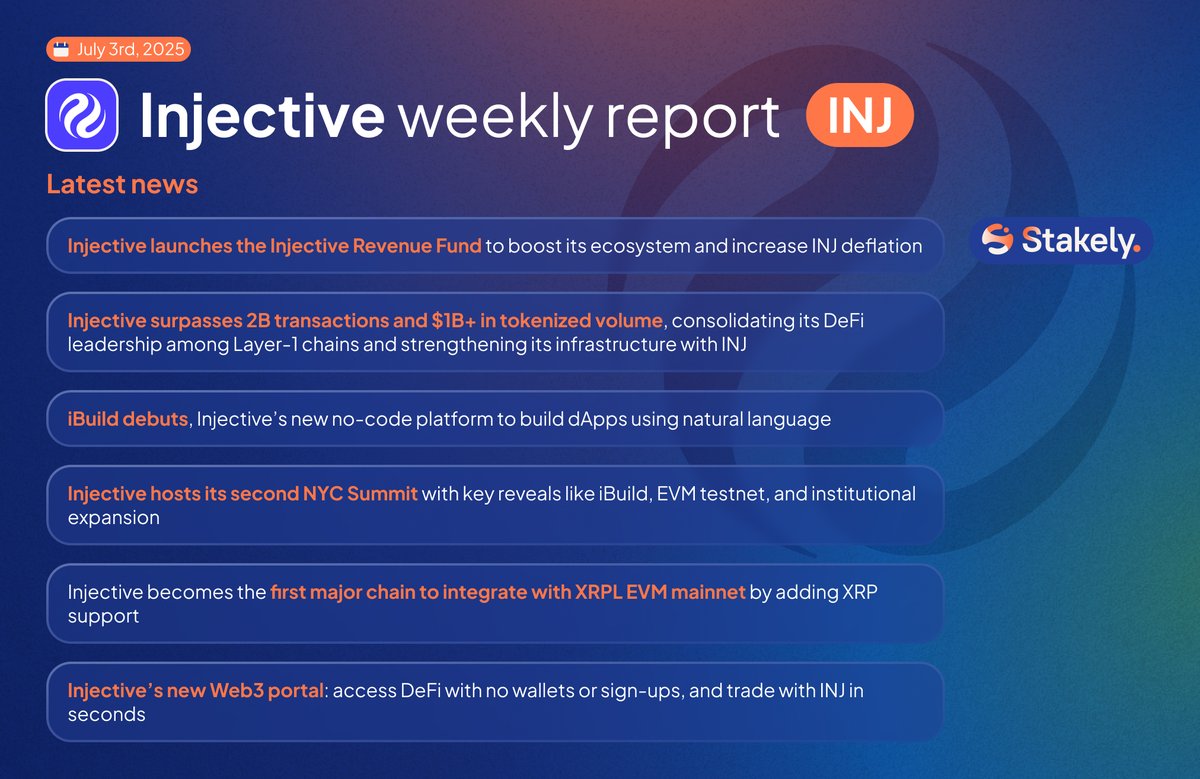











Sosialt